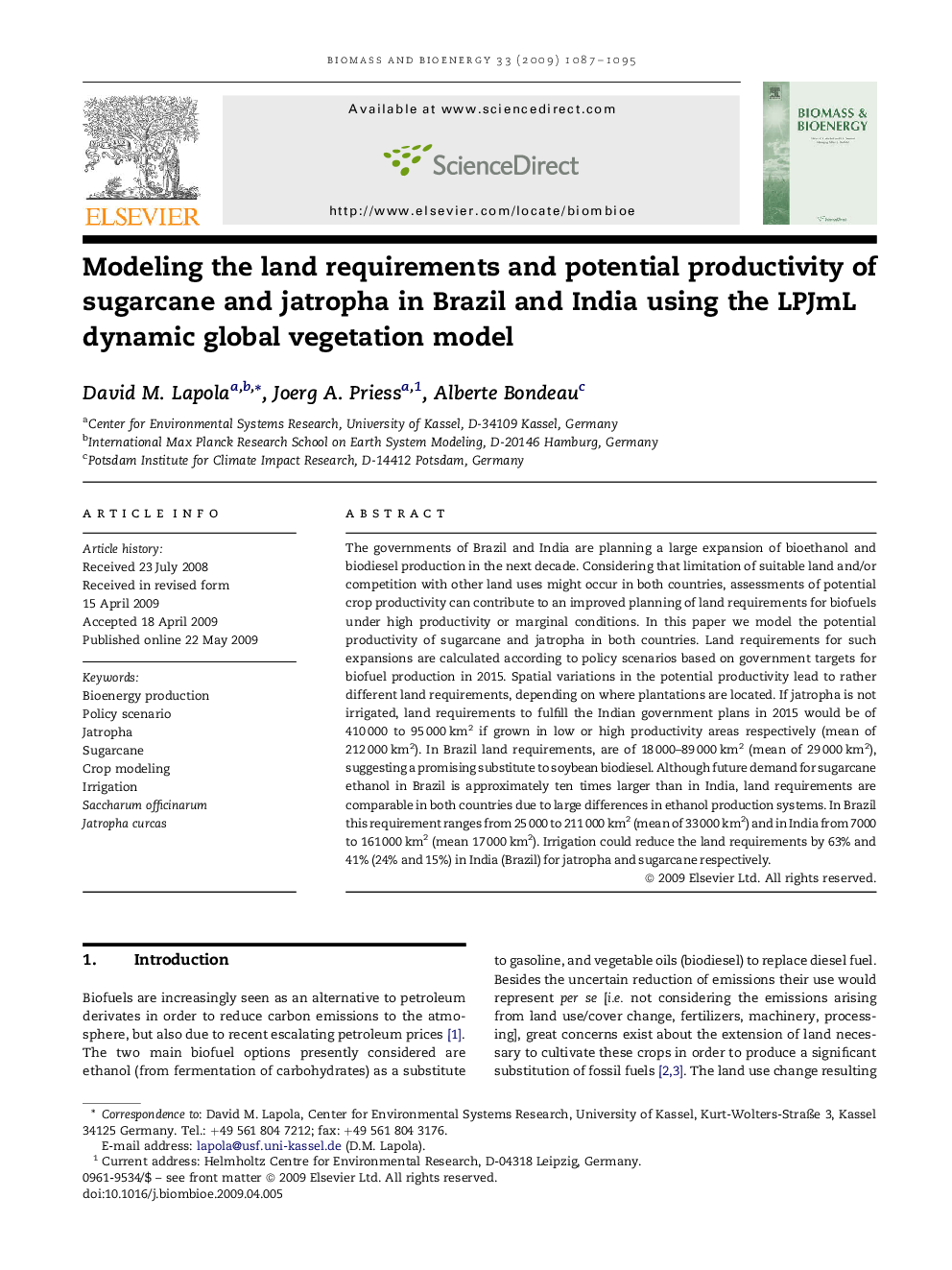| Article ID | Journal | Published Year | Pages | File Type |
|---|---|---|---|---|
| 678335 | Biomass and Bioenergy | 2009 | 9 Pages |
The governments of Brazil and India are planning a large expansion of bioethanol and biodiesel production in the next decade. Considering that limitation of suitable land and/or competition with other land uses might occur in both countries, assessments of potential crop productivity can contribute to an improved planning of land requirements for biofuels under high productivity or marginal conditions. In this paper we model the potential productivity of sugarcane and jatropha in both countries. Land requirements for such expansions are calculated according to policy scenarios based on government targets for biofuel production in 2015. Spatial variations in the potential productivity lead to rather different land requirements, depending on where plantations are located. If jatropha is not irrigated, land requirements to fulfill the Indian government plans in 2015 would be of 410 000 to 95 000 km2 if grown in low or high productivity areas respectively (mean of 212 000 km2). In Brazil land requirements, are of 18 000–89 000 km2 (mean of 29 000 km2), suggesting a promising substitute to soybean biodiesel. Although future demand for sugarcane ethanol in Brazil is approximately ten times larger than in India, land requirements are comparable in both countries due to large differences in ethanol production systems. In Brazil this requirement ranges from 25 000 to 211 000 km2 (mean of 33 000 km2) and in India from 7000 to 161 000 km2 (mean 17 000 km2). Irrigation could reduce the land requirements by 63% and 41% (24% and 15%) in India (Brazil) for jatropha and sugarcane respectively.
